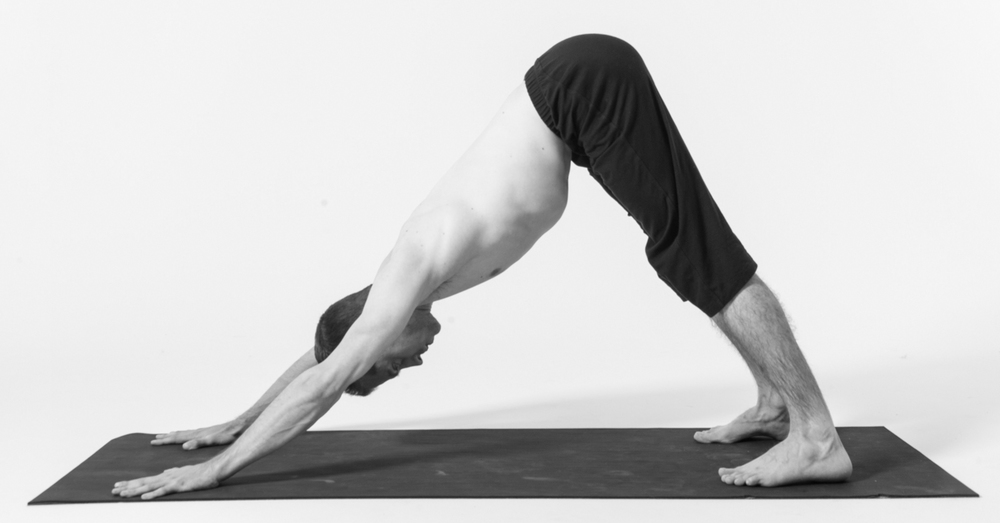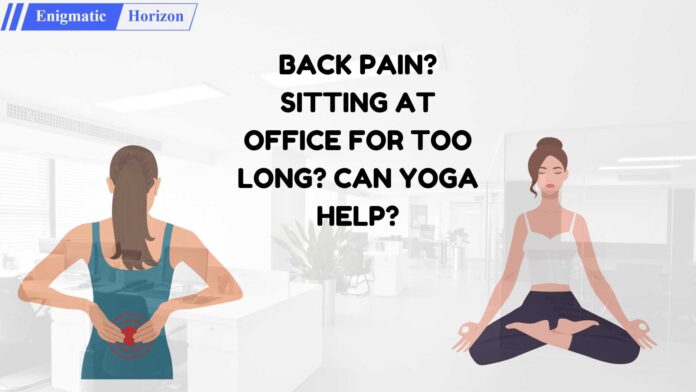Are you someone who is suffering from back pain due to sitting for prolonged periods? Well, in today’s fast-paced world, many of us indeed spend a significant amount of time sitting down, whether it’s at work, in front of the TV, or during long commutes from home to work and vice versa. However, research has shown that prolonged sitting can have serious negative effects on not just our physical, but also our mental health. However, if you are working in a job, where you need to sit in front of the computer for 7-8 hours, what can you do?
Having Back Pain due to Sitting for Long Hours?

Back pain is not the only side effect of prolonged sitting! Studies have linked prolonged sitting to an increased risk of cardiovascular disease, type 2 diabetes, and obesity. When we sit for long periods, our body’s metabolism slows down, reducing the ability to regulate blood sugar and break down fats efficiently. This can contribute to insulin resistance, which is a major factor in the development of diabetes. Additionally, sitting for extended periods has been associated with high blood pressure, poor circulation, and increased cholesterol levels, all of which also increases the risk of heart disease.
Another serious concern is the impact of prolonged sitting on musculoskeletal health. Sitting for too long, especially with poor posture, puts excessive pressure on the spine, and this is what lead to chronic back pain, neck stiffness, and even spinal disc problems. If you are an office worker, you might have often experienced discomfort due to prolonged computer use, as this strains the neck, shoulders, and lower back. Over time, this can lead to serious spinal issues that affect overall mobility and posture.
Beyond physical health, sitting on a chair for prolonged periods has been linked to mental health issues as well such as anxiety and depression. When your body doesn’t get enough physical activity, it can lead to poor circulation and lower oxygen supply to the brain, and this affects cognitive function and mood regulation. People who sit for extended hours often experience lower energy levels, increased stress, and decreased productivity. The lack of movement also limits endorphin production, which plays a crucial role in maintaining a positive mood and reducing stress levels.
Sitting in Ancient India: A Healthier Alternative

Sitting on chairs is unnatural for the human body, which is why in ancient India, people traditionally sat in Padmasana (Lotus Pose) or Vajrasana (Thunderbolt Pose). These postures encourage better spinal alignment, improve digestion, and enhance flexibility. Unlike chair sitting, which compresses the lower spine and restricts circulation, these traditional sitting positions help maintain posture and keep the body engaged.
Simple Ways to Reduce Sitting Time on Chairs
Even if you work in an office or on a computer for long periods, the good news is that there are simple and effective ways to combat the negative effects of prolonged sitting. Here are a few practical tips:
- Take Regular Breaks: Stand up and stretch every 30-60 minutes to promote circulation and relieve muscle tension.
- Use a Standing Desk: Adjustable desks allow you to switch between sitting and standing, reducing strain on the body.
- Walk More: Make sure to incorporate walking into your daily routine, such as taking short walks during breaks or using stairs instead of elevators. This can help a lot- more than you can imagine!
- Engage in Physical Activity: Regular exercise, such as jogging, yoga, or strength training, helps counteract many of the negative effects of prolonged sitting.
- Practice Good Posture: Keep your back straight, shoulders relaxed, and feet flat on the floor to minimize strain on the spine.
- Limit Screen Time: Reduce unnecessary screen time and find hobbies that involve physical movement, like dancing, gardening, or playing a sport.
Yoga Pose to Combat the Effects of Sitting: Downward-Facing Dog (Adho Mukha Svanasana)
Yoga is an excellent way to counteract the effects of prolonged sitting, as it promotes flexibility, improves posture, and strengthens muscles. One particularly effective pose is Downward-Facing Dog (Adho Mukha Svanasana).

How to Perform Downward-Facing Dog:
- Start on all fours with your hands shoulder-width apart and knees hip-width apart.
- Tuck your toes under and push your hips upward, straightening your legs as much as possible.
- Press your hands firmly into the mat, keeping your arms straight and engaging your shoulders.
- Allow your head to relax between your arms, keeping your gaze towards your feet.
- Hold the pose for 30-60 seconds while taking deep breaths.
- Slowly lower your knees back to the ground to release the pose.
Benefits of Downward-Facing Dog:
- Stretches and strengthens the spine, relieving lower back pain.
- Enhances circulation by encouraging blood flow to the brain.
- Improves flexibility in the hamstrings, calves, and shoulders.
- Relieves tension and stress, boosting mental clarity and focus.
So, even if you are someone who has to sit in the office or in front of the computer for prolonged periods, by incorporating simple changes and practices like yoga into our daily routine, you can reduce the risks and problems like back pain due to sitting for prolonged periods. This shall not just improve your overall health, so don’t delay, and begin taking the steps for a healthier and happier version of yourself!
